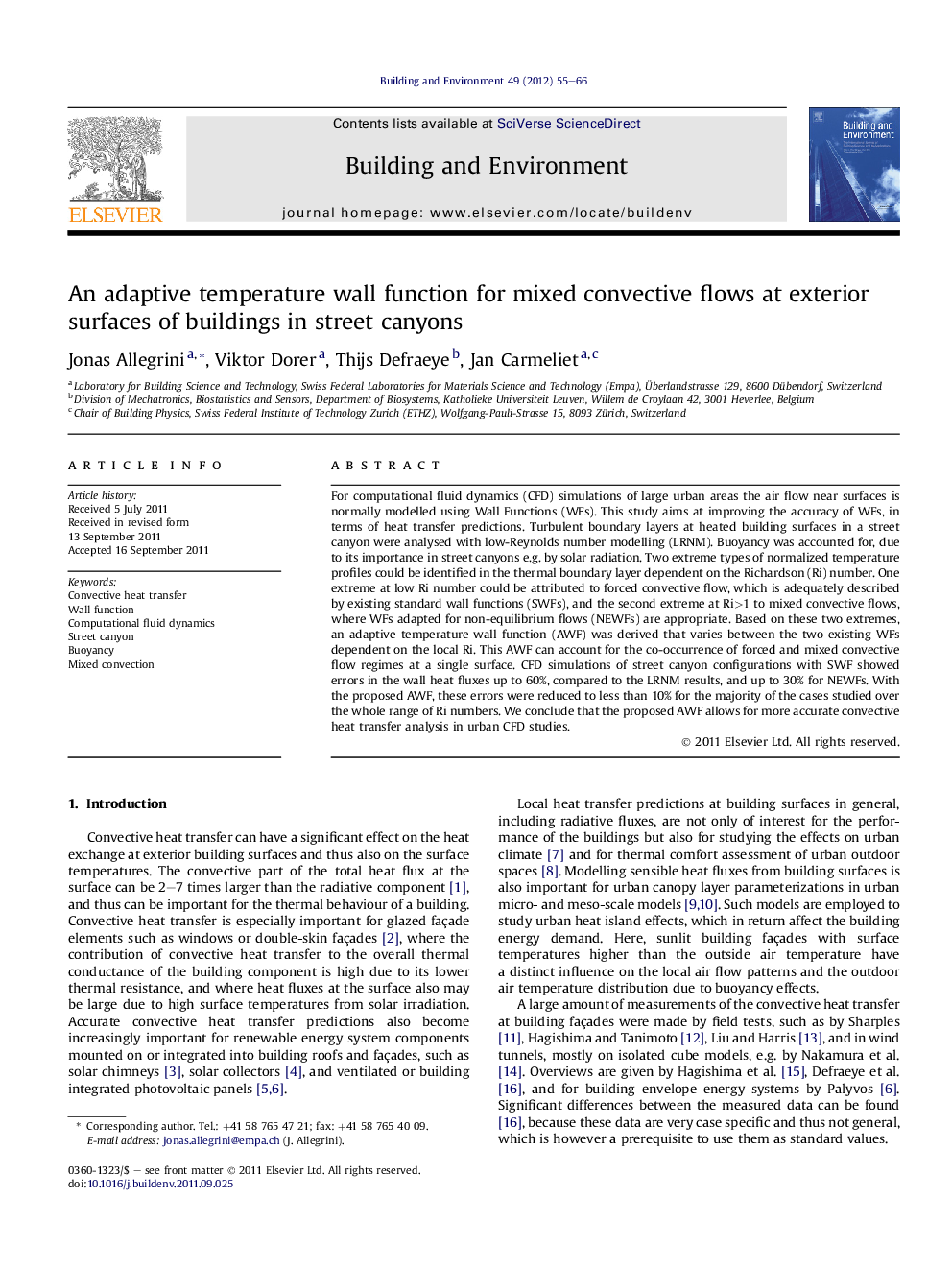| کد مقاله | کد نشریه | سال انتشار | مقاله انگلیسی | نسخه تمام متن |
|---|---|---|---|---|
| 248633 | 502577 | 2012 | 12 صفحه PDF | دانلود رایگان |

For computational fluid dynamics (CFD) simulations of large urban areas the air flow near surfaces is normally modelled using Wall Functions (WFs). This study aims at improving the accuracy of WFs, in terms of heat transfer predictions. Turbulent boundary layers at heated building surfaces in a street canyon were analysed with low-Reynolds number modelling (LRNM). Buoyancy was accounted for, due to its importance in street canyons e.g. by solar radiation. Two extreme types of normalized temperature profiles could be identified in the thermal boundary layer dependent on the Richardson (Ri) number. One extreme at low Ri number could be attributed to forced convective flow, which is adequately described by existing standard wall functions (SWFs), and the second extreme at Ri>1 to mixed convective flows, where WFs adapted for non-equilibrium flows (NEWFs) are appropriate. Based on these two extremes, an adaptive temperature wall function (AWF) was derived that varies between the two existing WFs dependent on the local Ri. This AWF can account for the co-occurrence of forced and mixed convective flow regimes at a single surface. CFD simulations of street canyon configurations with SWF showed errors in the wall heat fluxes up to 60%, compared to the LRNM results, and up to 30% for NEWFs. With the proposed AWF, these errors were reduced to less than 10% for the majority of the cases studied over the whole range of Ri numbers. We conclude that the proposed AWF allows for more accurate convective heat transfer analysis in urban CFD studies.
► Accurate prediction of the heat transfer is needed for buildings in street canyons.
► Buoyancy affects the flow and temperature fields inside the boundary layer.
► Two types of normalized temperatures profiles can be identified close to the walls.
► An adaptive wall function (AWF) was derived based on two existing wall functions.
► Error in heat transfer prediction is significantly reduced with AWF for buoyant flows.
Journal: Building and Environment - Volume 49, March 2012, Pages 55–66